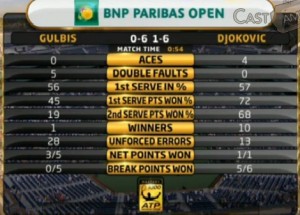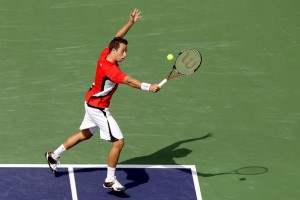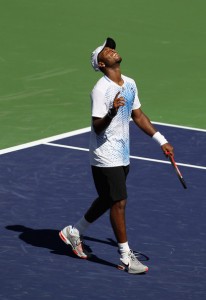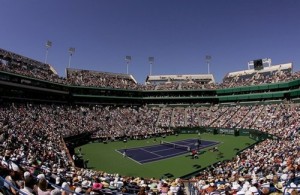Another update has appeared to the continuing exploits of Israel’s No.2 tennis player Amir Weintraub, whose escapades I first covered here. The fifth installment of his adventures – entitled ‘A week that really happened to me’ – has been translated and posted in the original forum thread (it’s on page 8). It covers his debut for Israel in Davis Cup, in which he fought to a five set win over Jerzy Janowicz, whom he persists in referring to as ‘The Pole’.
As much as I enjoy and appreciate Weintraub’s intermittent updates, I do regret an increasing tendency towards introspection; towards merely telling us how he’s feeling, especially when he’s feeling glum. This stuff is not his strong point, mainly because he ends up sounding much like everyone, and thus could be anyone.  World literature is hardly under-represented on this front, and Weintraub’s posts demonstrate that the terms with which self-pity is conveyed transcend language barriers. It reads predictably even in translation. You don’t need to have played your first Davis Cup match to write: ‘I’m shaking and excited. My stomach rolling. How am I supposed to hit the ball when I’m this nervous? I hold it all in, get the claps, hundreds of people calling my name, I’ve waited my entire life for that moment and it is a lot more thrilling than I could possibly dream.’ You just need a modicum of imagination. Conversely, with only a few words altered you could be describing the closing scenes of Teen Wolf. It’s just too general.
World literature is hardly under-represented on this front, and Weintraub’s posts demonstrate that the terms with which self-pity is conveyed transcend language barriers. It reads predictably even in translation. You don’t need to have played your first Davis Cup match to write: ‘I’m shaking and excited. My stomach rolling. How am I supposed to hit the ball when I’m this nervous? I hold it all in, get the claps, hundreds of people calling my name, I’ve waited my entire life for that moment and it is a lot more thrilling than I could possibly dream.’ You just need a modicum of imagination. Conversely, with only a few words altered you could be describing the closing scenes of Teen Wolf. It’s just too general.
When he gives us the incidental details, however, his rare situation snaps into focus: ‘We get back to the hotel room and each of us gets exactly what he wanted for ‘match day food’. Dudi asks for pasta, I opt for rice.’ We can surmise, without having to be told and through the mere fact of its inclusion, that this strikes Weintraub as noteworthy. The (unintentional) echo of death row only adds to the sense of foreboding. It is perfectly evocative, for it conjures the distance between the Davis Cup experience and the week-in grind of the Futures and Challenger circuits.
Overcoming Jerzy Janowicz is to date the greatest moment of Weintraub’s career. However, it isn’t so great that he wishes to repeat it: ‘I only pray Andy and Yoni will take the doubles . . . so I wouldn’t have to go through this hell on Sunday again.’ Again, it’s the specificity of the admission that lends it value. Really, he’s only saying that he’s relieved, but if he’d only said that he wouldn’t have been saying much, certainly not much that we couldn’t have guessed ourselves. It is the particularity of his relief that makes it his, and that makes it valuable to the reader. These details invite us into his world.
His world is not that of, say, the world’s No.1, who spent the Davis Cup weekend at the impossible task of beating up hapless Belgians. It was a weekend in which the world group ties ground on with narcoleptic inevitability. It is worth being reminded that the zonal groups didn’t. Indeed, there is substance to the argument that the Davis Cup is most meaningful only for the nation that lofts the trophy each December, and for the smaller nations whose players are granted a transfigurative experience. Amir Weintraub was one such. I’m eager to see where he goes from here.














